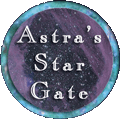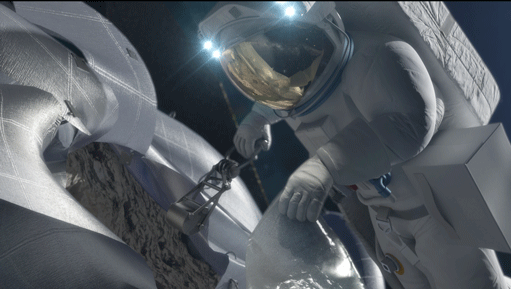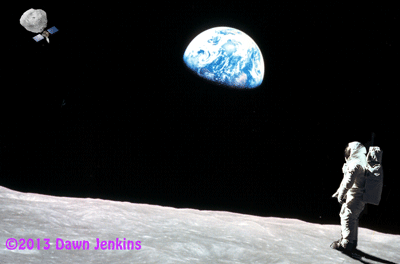
Near Earth Asteroids



Catch a Falling Star and put it in your pocket!
Missions to asteroids are being discussed in many space exploration and industrial circles. It seems everyone wants a piece of the rocks!
NASA takes a serious look at relocating a NEA and parking it closer to home.
Go to Astra's Cool Asteroid Catalog to see what asteroids make good targets or if Astra just thinks they are KewL
Quick Links
NASA BAA for Asteroid Redirect ! - NASA solicits proposals
Asteroid Redirect Mission Page at NASA Get the Asteroid Workshop Final Report from NASAThe Asteroid Redirect Mission (ARM) plans to capture a small asteroid, redirect it into a stable lunar orbit, and then launch astronauts using newly developed rocket and spacecraft systems to explore it. ARM pushes the limits of current technologies to the next level, demands that development of rockets and spacecraft move human exploration beyond low Earth orbit and into the lunar arena. It encompasses both human and robotic space exploration. It is a multi-disciplinary effort that encourages lunar development, supports planetary defense from asteroid impacts, helps develop technologies to use local resources known as in-situ resource utilization (ISRU), and initiates the industry of asteroid mining. Unfortunately, this mission has been cancelled although there may be one like this in the future.
The technology for the robotic mission of encountering, studying, capturing and then returning a small asteroid to lunar orbit is available today, without making quantum leaps. This means that the mission requirements can be readily met, decreasing development time and allowing the mission to be undertaken and completed in a short period of time. At the same time, systems and capacities push beyond current limits to the cutting edge.
The beauty of the asteroid redirect mission is that it satisfies many long held desires of those who would explore the universe. It opens a new era of lunar development. It starts with a robotic return mission and brings an asteroid into the Earth-Moon system where humans can take the first baby steps and learn to work with these materials in space. ARM can inspire development of better methods for manipulating asteroids and improving our planetary defense. Finally, there is plenty of room in this mission for international involvement and global cooperation.
The target of the ARM program is a small asteroid from a type of object known as an Earth approaching asteroid that are also known Near Earth Objects (NEOs) or Near Earth Asteroids (NEAs). These asteroids are in three orbital classes designated Atens, Apollos and Amors. Aten asteroids orbit the Sun and cross the Earth's path at an average distance smaller than 1 astronomical unit (AU), Apollo asteroids orbit the Sun and cross the Earth's path at an average distance greater than 1 AU, and Amor asteroids cross the orbital path of Mars and also make approaches to Earth's orbit. These asteroids are not located in the main asteroid belt, but apparently have some attraction to our home planet, since they have parked themselves in a similar orbit. They appear close to the horizon and are difficult to detect with Earth-based telescopes. They have long been viewed as targets for human exploration because their proximity to Earth lowers transit times and energy costs.
ARM is specifically looking for an Apollo, Aten or Amor asteroid that is a C-class object. C-class asteroids are the most common type of asteroid, believed to have formed early, thus contain the primitive building blocks of the solar system. They are dark objects (albedo 0.03), reflecting only ~6% of the light that reaches them. These asteroids show signs that the minerals that formed on them required a water-rich environment and therefore water should be available on them. The mission is currently targeting asteroids with diameters between 5 and 13 meters. Most of these objects will be between 0.01 AU and 0.03 AU away. They are small, complicating detection and composition identification. There are two different strategies under consideration for the redirect mission. One strategy calls for locating a small asteroid and capturing it in a flexible bag. The second strategy is to capture a piece from a larger asteroid, one that is composed of a loose pile of rubble. It is possible that a large boulder could be removed from the surface and brought back.
This website draws on the Asteroid Retrieval Feasibility Study that was published by the Keck Institute for Space Studies (KISS). It will be referred to as the KISS study in this website. An observing campaign would be supported by the Minor Planet Center (MPC), the international clearinghouse for astrometric observations and orbits of minor planets (asteroids) and comets. MPC is the official body of the International Astronomical Union (IAU). This site also puts forth ideas to emphasize how the ARM mission can inspire us to think outside the box to work on problems that are beyond our everyday experience.
In addition to the new observation campaign designed by KISS, a significant number of possible candidates have already been discovered and identified. Table 1 shows list of 8 sample candidates selected by the author from a survey published in the Journal of Spacecraft and Rockets [link] and supplemented by data downloaded from the Near Earth Objects: Dynamic Site (NEODYS) database.
| NEO | Diameter | Close Approaches | Magnitude | Notes |
| 1991VG | 0-10 m | 2016-10-26, 2017-08-07, 2018-02-11 | 28.4 | |
| 2006 JY26 | 0-10 m | Nov. 2013, 2014, 2015 | 28.4 | |
| 2007 UN12 | 0-10 m | 2020-07-04, 2021-01-08 | 28.7 | |
| 2008 EA9 | 0-10 m | 2019-11-24, 2020-04-26 | 28.4 | Plymouth Rock |
| 2008 HU4 | 0-10 m | 2016-04-16, 2026-03-27 | 28.4 | |
| 2009 BD | 0-10 m | 2022-12-01, 2023-06-26 | 28.1 | |
| 2001 GP2 | 0-10 m | 2019-05-04, 2020-02-21 and 10-13 | 26.9 | Earth Crosser! |
| 2005 LC | 10 - 20 m | 2034-04-08 | 26.8 | |
| 1999 AO10 | 50-110 m | 2018-12-7, 2019-06-19 | 23.9 | Human Mission? |
These objects have already been identified as possible targets for human exploration due to their proximity at close approach. However, the difficulties involved in observing these objects and their faint magnitudes means that detailed studies have not yet been carried out on most of them. The asteroid 2008 EA9, dubbed Plymouth Rock, was considered by Lockheed Martin in 2009 to use the Orion space capsule for a deep space human mission. Asteroids similar to the ones needed for ARM may have been identified and evaluated for this mission as well. If so, this list should reviewed and qualifying asteroids added to the candidate list.
An NEA that is a good candidate will be in an orbit that will cross or approach Earth in the next decade or so. Efforts should be made to recover these objects with the intention of identifying their composition and refining their orbits. The detection program should also have to include a system for examining and classifying the brighter objects that are discovered as well. Larger objects are a far greater threat to Earth's security. In addition, they will be very faint at the greater distance, making it a challenge for us to locate and track them.
The Asteroid Redirect Mission is the most promising space mission that has been discussed in the new millennium. Moving a larger rock would be more interesting, but that would require rethinking the capture method. A larger asteroid may eventually be brought back to cislunar space and into the sphere of Earth influence and placed in a stable lunar orbit. A large asteroid would allow settlements, hotels, scientific research, Earth observation, remote lunar operations, and other opportunities that Earth based humans have not yet imagined. The Asteroid Redirect Vehicle (ARV) should be configured so that it can be refueled with xenon in lunar orbit. An asteroid that contained a lot of water could be relocated by the ARV to the surface of the moon after it exhausts its usefulness and the remaining volatiles be used by future human explorers.
Through the ARM program the human race will begin to mine the asteroids and prepare for a future Mars mission by improving our experience in space exploration. It has been suggested that exploring Mars could be carried out by establishing a base on the moon Phobos. This moon that once was probably nothing more than an asteroid that the planet Mars captured, just like the one ARM would bring back to the Earth-Moon system. In order develop a base on Phobos, technology for landing and launch has to be developed. The low mass of this body means the conventional methods won't work as they do on larger bodies. The ARM program will help to develop the technology to come and go from asteroid surfaces.
The ARM program will encourage science, technology, engineering and mathematics (STEM) education by presenting young thinkers with an endeavor that inspires the kind of interest that moves them to become engineers, scientists and mathematicians. Imagine a generation of space explorers growing up watching the ARV haul a distant asteroid into lunar orbit The ARM program will inspire them to work in space and foster a desire to explore the moon and the asteroids, the same way previous generations who watched men walk on the moon wanted to know more about it. It is those same students working for NASA who helped plan missions to other planets, explore the universe, and brought the US space program to where it is today. The quest to expand our knowledge of the universe has not ended.

Click on the links to navigate to the On-line papers that discuss Near Earth Asteroid Missions:
Asteroid Return Mission Feasibility Study - from the KECK Institute for Space Studies
This is a 51-page pdf document about the KISS study on the Asteroid Retrieval Mission.
Asteroid Return Mission Presentations, Papers and Media - from the KECK Institute for Space Studies' asteroid return mission study
Papers that were presented during the asteroid return study that was sponsored by the Keck Institute for Space Studies.
- - -
Easily Retrievable Objects among the NEO Population - D. Yárnoz, J.Sánchez, C. McInnes
This paper discuss orbits and trajectories that can be used to retrieve asteroids and bring them back to cislunar orbit. Includes a candidate asteroid list.
General Papers on Asteroid Missions
- Return to Asteroid Exploration Missions
This page was updated by Dawn Jenkins, June 27, 2022.